MFSK-16
MFSK-32
MFSK-64
MFSK-128
Internet
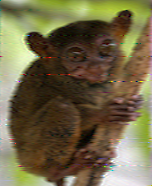
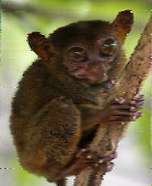
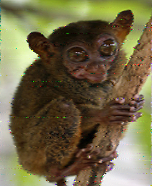
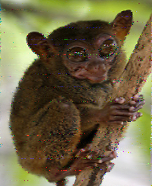
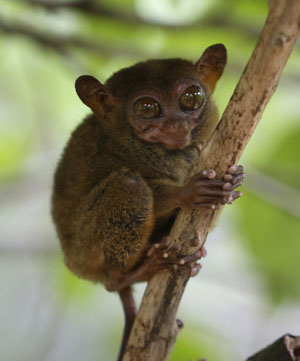
blurred
usual
sharp
most sharply
www.rhci-online.net/radiogram/radiogram.htm
██╗ ██╗ ██████╗ █████╗ ██████╗ █████╗ ██████╗ ██╗ ██████╗ ██████╗ ██████╗ █████╗ ███╗ ███╗ ██║ ██║██╔═══██╗██╔══██╗ ██╔══██╗██╔══██╗██╔══██╗██║██╔═══██╗██╔════╝ ██╔══██╗██╔══██╗████╗ ████║ ██║ ██║██║ ██║███████║ ██████╔╝███████║██║ ██║██║██║ ██║██║ ███╗██████╔╝███████║██╔████╔██║ ╚██╗ ██╔╝██║ ██║██╔══██║ ██╔══██╗██╔══██║██║ ██║██║██║ ██║██║ ██║██╔══██╗██╔══██║██║╚██╔╝██║ ╚████╔╝ ╚██████╔╝██║ ██║ ██║ ██║██║ ██║██████╔╝██║╚██████╔╝╚██████╔╝██║ ██║██║ ██║██║ ╚═╝ ██║ ╚═══╝ ╚═════╝ ╚═╝ ╚═╝ ╚═╝ ╚═╝╚═╝ ╚═╝╚═════╝ ╚═╝ ╚═════╝ ╚═════╝ ╚═╝ ╚═╝╚═╝ ╚═╝╚═╝ ╚═╝
RSID: <<2013-10-26T16:01Z MFSK-16 @ 17860000+1500>>
<STX>
Welcome to program 30 of VOA Radiogram from the Voice of America.
Here is the lineup for today's program:
3:17 MFSK16: Program preview (now)
7:02 MFSK16/32/64/128: Image in each mode
:45 MFSK32: Introduction to MFSK64L and 128L
1:43 MFSK64: VOA News re flying cars
2:00 MFSK64L: Same VOA News story
2:16 MFSK32 image: Flying car in flight
1:20 MFSK128: VOA News re oldest comet strike
1:36 MFSK128L: Same VOA News story
2:12 MFSK32/Flmsg: News from kimandrewelliott.com
2:26 MFSK32: VOA News in Spanish re Blackberry
:33 MFSK32: Closing announcements
Please send reception reports to radiogram@voanews.com
And visit voaradiogram.net
Twitter: @VOARadiogram
Today we continue our comparison of an image transmitted in the
MFSK16, 32, 64, and 128 modes.
Caption: A tarsier, among the world's smallest primates,
evacuated to a conservation center after an earthquake struck
central Philippines...
<EOT>
RSID: <<2013-10-26T16:04Z MFSK-16 @ 17860000+1500>>
Sending Pic:152x186C;
RSID: <<2013-10-26T16:06Z MFSK-32 @ 17860000+1500>>
Sending Pic:152x186C;
RSID: <<2013-10-26T16:08Z MFSK-64 @ 17860000+1500>>
Sending Pic:152x186C;
RSID: <<2013-10-26T16:10Z MFSK-128 @ 17860000+1500>>
Sending Pic:152x186C;
|
MFSK-16 |
MFSK-32 |
MFSK-64 |
MFSK-128 |
Internet |
|
|
|
|
|
|
|
blurred |
usual |
sharp |
most sharply |
|
RSID: <<2013-10-26T16:12Z MFSK-32 @ 17860000+1500>>
<STX>
This is VOA Radiogram from the Voice of America.
The latest "alpha" version of Fldigi is 3.21.76AR. It includes two new modes: MFSK64L and MFSK128L. The "L" stands for "long," as in long interleave: a "6.25 second interleaver for very-robust HF reception."
In the following transmissions, we will compare the performance of MFSK64 and MFSK64L, then MFSK128 and MFSK128L...
<EOT>
|
|
RSID: <<2013-10-26T16:13Z MFSK-64 @ 17860000+1500>>
<STX>
This is VOA Radiogram in MFSK64...
Flying Cars Could Be a Reality in Two Years
VOA News
October 18, 2013
Tired of sitting in bumper-to-bumper traffic?
In just two years, a company called Terrafugia says it will offer
flying cars for sale.
The company plans production of two "roadable" aircraft, the
Transition, which has folding wings and must be driven to an
airport for takeoff, and the TF-X, a car that could vertically
take off and land.
"The potential benefit to humanity of a practical flying car is
tremendous," says Terrafugia CEO Carl Dietrich. "The global
impact of widely distributed, practical, personal airborne
transportation has been estimated by the non-profit CAFE
Foundation at approximately $800 billion/year. NASA has estimated
it at $1 trillion/year. I believe it is impossible to quantify
the benefit to humanity."
The Transition, which is much further along in development than
the more conceptual TF-X, is expected to cost nearly $300,000,
but the company says there were already 100 pre-orders earlier
this year. The car uses the same engine for driving and flying,
and can be run on premium gasoline instead of much costlier
aviation fuel. On a full tank, the company says the plane has a
range of about 800 kilometers.
Owners will have to have a valid driver's license as well as a
sport pilot certification to operate the Transition.
Terrafugia says the Transition must meet the Federal Motor
Vehicle Safety Standards of the National Highway Traffic Safety
Administration as part of the automotive certification process.
Recent drive testing showed the craft is capable of stopping from
a speed of 120 kilometers per hour in a distance of only 34
meters, according to the company.
http://www.voanews.com/content/flying-cars-could-be-a-reality-in-two-years/1772542.html
Next on VOA Radiogram, the same VOA News story in MFSK64L...
<EOT>
RSID: <<2013-10-26T16:14Z MFSK-64L @ 17860000+1500>>
<STX>
Flying Cars Could Be a Reality in Two Years
VOA News
October 18, 2013
Tired of sitting in bumper-to-bumper traffic?
In just two years, a company called Terrafugia says it will offer
flying cars for sale.
The company plans production of two "roadable" aircraft, the
Transition, which has folding wings and must be driven to an
airport for takeoff, and the TF-X, a car that could vertically
take off and land.
"The potential benefit to humanity of a practical flying car is
tremendous," says Terrafugia CEO Carl Dietrich. "The global
impact of widely distributed, practical, personal airborne
transportation has been estimated by the non-profit CAFE
Foundation at approximately $800 billion/year. NASA has estimated
it at $1 trillion/year. I believe it is impossible to quantify
the benefit to humanity."
The Transition, which is much further along in development than
the more conceptual TF-X, is expected to cost nearly $300,000,
but the company says there were already 100 pre-orders earlier
this year. The car uses the same engine for driving and flying,
and can be run on premium gasoline instead of much costlier
aviation fuel. On a full tank, the company says the plane has a
range of about 800 kilometers.
Owners will have to have a valid driver's license as well as a
sport pilot certification to operate the Transition.
Terrafugia says the Transition must meet the Federal Motor
Vehicle Safety Standards of the National Highway Traffic Safety
Administration as part of the automotive certification process.
Recent drive testing showed the craft is capable of stopping from
a speed of 120 kilometers per hour in a distance of only 34
meters, according to the company.
http://www.voanews.com/content/flying-cars-could-be-a-reality-in-two-years/1772542.html
Next on VOA Radiogram, an MFSK32 image with the caption:
Terrafugia's Transition "roadable aircraft" is seen in flying
mode.
<EOT>
RSID: <<2013-10-26T16:16Z MFSK-32 @ 17860000+1500>>
<STX>
|
Sending Pic:299x120C; |
Internet: |
|
|
|
Please send reception reports to radiogram@voanews.com
And visit voaradiogram.net
Twitter: @VOARadiogram
VOA Radiogram now changes to MFSK128...
<EOT>
RSID: <<2013-10-26T16:19Z MFSK-128 @ 17860000+1500>>
<STX>
This is VOA Radiogram in MFSK128...
VOA NEWS
South African Scientists Claim Discovery of First Comet Strike
Anita Powell
October 21, 2013
JOHANNESBURG - South African researchers say they have found
conclusive evidence of earth's first-ever known comet strike,
about 28 million years ago. The researchers say this exciting
find in rural Egypt could unlock more secrets of the universe.
South African academics say the evidence they've found indicates
the comet hit the earth some 28 million years ago - in a desert
in western Egypt.
The bits of glassy black rock left at the scene - which
scientists say are comet fragments - could help unlock the
secrets of our universe. The academics presented their findings
at the University of the Witwatersrand in Johannesburg this
month.
Meteors and asteroids collide with this planet fairly frequently.
But a comet strike, said Professor David Block of the University
of the Witwatersrand, is unique and exciting.
"Because a comet is this dirty snowball of not only rock, but
rock mixed with ice. And the point is that atoms, life-giving
atoms of carbon, of oxygen, of nitrogen, of argon, of neon, of
krypton, are encoded within this little chemical factory from
beyond the solar system," said Block. "These are grains of cosmic
dust, which existed prior to our solar system forming. So they
contain unique secrets of the chemical compo [composition] of the
cloud of gas and dust, which collapsed to form our sun and the
planets around it."
Some scientists have theorized it may have been a comet strike
that killed the dinosaurs 65 million years ago - but there is no
evidence.
And, said Dr. Marco Andreoli, no one has seen a comet hit and
lived to tell about it because they tend to fry every living
thing in their path to ashes. He said, though, the evidence of
this comet strike is clear to him.
"We are looking at something of ... an astronomical phenomenon," he
said.
Geoscientist Jan Kramers from the University of Johannesburg said
that although the scientific community is divided on his team's
conclusions that the fragment is a comet, he himself is fairly
certain.
"... it's a probably a comet, because it can't be anything else,
coming from the outermost reaches in the solar system, traveling
in the gravity of the sun and hitting the Earth by chance. What
it did tells you something more," said Kramers. "What it did when
it hit the atmosphere, it exploded. And that is what comets do
when they hit the atmosphere. And this explosion produces an
incredible amount of heat, which can account for the Libyan
desert glass which we found in that region."
The researchers say they hope further study of this comet
fragments will help them figure out the beginnings of our
universe.
Next on VOA Radiogram, the same VOA News story in MFSK128L...
<EOT>
RSID: <<2013-10-26T16:20Z MFSK-128L @ 17860000+1500>>
<STX>
This is VOA Radiogram in MFSK128...
VOA NEWS
South African Scientists Claim Discovery of First Comet Strike
Anita Powell
October 21, 2013
JOHANNESBURG - South African researchers say they have found
conclusive evidence of earth's first-ever known comet strike,
about 28 million years ago. The researchers say this exciting
find in rural Egypt could unlock more secrets of the universe.
South African academics say the evidence they've found indicates
the comet hit the earth some 28 million years ago - in a desert
in western Egypt.
The bits of glassy black rock left at the scene - which
scientists say are comet fragments - could help unlock the
secrets of our universe. The academics presented their findings
at the University of the Witwatersrand in Johannesburg this
month.
Meteors and asteroids collide with this planet fairly frequently.
But a comet strike, said Professor David Block of the University
of the Witwatersrand, is unique and exciting.
"Because a comet is this dirty snowball of not only rock, but
rock mixed with ice. And the point is that atoms, life-giving
atoms of carbon, of oxygen, of nitrogen, of argon, of neon, of
krypton, are encoded within this little chemical factory from
beyond the solar system," said Block. "These are grains of cosmic
dust, which existed prior to our solar system forming. So they
contain unique secrets of the chemical compo [composition] of the
cloud of gas and dust, which collapsed to form our sun and the
planets around it."
Some scientists have theorized it may have been a comet strike
that killed the dinosaurs 65 million years ago - but there is no
evidence.
And, said Dr. Marco Andreoli, no one has seen a comet hit and
lived to tell about it because they tend to fry every living
thing in their path to ashes. He said, though, the evidence of
this comet strike is clear to him.
"We are looking at something of ... an astronomical phenomenon," he
said.
Geoscientist Jan Kramers from the University of Johannesburg said
that although the scientific community is divided on his team's
conclusions that the fragment is a comet, he himself is fairly
certain.
"... it's a probably a comet, because it can't be anything else,
coming from the outermost reaches in the solar system, traveling
in the gravity of the sun and hitting the Earth by chance. What
it did tells you something more," said Kramers. "What it did when
it hit the atmosphere, it exploded. And that is what comets do
when they hit the atmosphere. And this explosion produces an
incredible amount of heat, which can account for the Libyan
desert glass which we found in that region."
The researchers say they hope further study of this comet
fragments will help them figure out the beginnings of our
universe.
<EOT>
RSID: <<2013-10-26T16:22Z MFSK-32 @ 17860000+1500>>
... start
[WRAP:beg][WRAP:lf][WRAP:fn VOAR30_MFSK32.b2s]<flmsg>1.1.33
:hdr_fm:19
VOA 20132310194528
:hdr_ed:19
VOA 20132310193113
<blankform>
:mg:1122 <h3>News about international broadcasting from...
</h3><h2><a href="http://www.kimandrewelliott.com/">www.kimandrewelliott.com</a></h2>
<h3><a href="http://kimelli.nfshost.com/index.php?id=14314">Polish Radio will eliminate the last of its
shortwave output.</a></h3>
<b>SWLing Post, 20 Oct 2013</b>, Thomas Witherspoon: "Many thanks to SWLing Post reader, Dominik, who writes:
'Polish Radio has recently announced closure of their remaining shortwave services. Currently they are on air
two times a day with programmes in Polish, Belarusian and Russian. They are going to abandon those transmissions
at the beginning of B13 season [last weekend of October]. [Translated into English:] "We have an announcement
for you - from 27th October 2013 we will no longer broadcast our programs on shortwave." There is a similar
announcement on the Belarusian service's webpage. Lithuanian mediumwave relay of Polish Radio isn't mentioned
anywhere, so it may remain on air. ...' [Thomas:] This reminds me that it was only in March 2012 when the Polish
Radio External Service stopped their English language broadcasts over shortwave."
[WRAP:chksum 8981][WRAP:end]
... end
<EOT>
News about international broadcasting from...www.kimandrewelliott.comPolish Radio will eliminate the last of its shortwave output.SWLing Post, 20 Oct 2013, Thomas Witherspoon: "Many thanks to SWLing Post reader, Dominik, who writes: 'Polish Radio has recently announced closure of their remaining shortwave services. Currently they are on air two times a day with programmes in Polish, Belarusian and Russian. They are going to abandon those transmissions at the beginning of B13 season [last weekend of October]. [Translated into English:] "We have an announcement for you - from 27th October 2013 we will no longer broadcast our programs on shortwave." There is a similar announcement on the Belarusian service's webpage. Lithuanian mediumwave relay of Polish Radio isn't mentioned anywhere, so it may remain on air. ...' [Thomas:] This reminds me that it was only in March 2012 when the Polish Radio External Service stopped their English language broadcasts over shortwave."
|
<STX>
VOANOTICIAS.COM
BlackBerry se niega a morir
Voz de América - Redacción
16.10.2013
El fabricante canadiense de teléfonos inteligentes BlackBerry
asegura que no desaparecerá, sino al contrario, se reinventan
para fortalecer su posición en el mercado.
"Puedes continuar contando con BlackBerry", fue el mensaje que
envió la compañía a sus consumidores, a través de una fuerte
campaña publicitaria en Estados Unidos.
"Disponemos de cantidades sustanciales de liquidez y de un
balance sin deuda", argumentó BlackBerry en su carta, recordando
que el grupo está en proceso de "reestructurarse con el objetivo
de disminuir en un 50% sus gastos con el fin de convertirse en
una organización muy eficaz".
BlackBerry todavía cuenta con 70 millones de usuarios en todo el
mundo, aunque la gran mayoría son clientes que utilizan modelos
viejos de sus teléfonos, sobre todo en países de Latinoamérica y
partes de Europa.
Su nueva plataforma operativa BlackBerry 10, no logró las ventas
esperadas, y la migración de sus usuarios a otras plataformas
como Android y iOS, parece imparable.
No obstante, BlackBerry anunció la presentación de nuevos
productos a principios del próximo año, y sus gerentes aseguraron
que a pesar de las millonarias pérdidas de la compañía, todavía
cuenta con $2.600 millones de dólares de liquidez, por lo que
están lejos de pensar en un cierre definitivo.
http://www.voanoticias.com/content/blackberry-cierre-telefonos-moviles-compania/1770239.html
<EOT>
<STX>
Please send reception reports to radiogram@voanews.com
And visit voaradiogram.net
Twitter: @VOARadiogram
Thanks to colleagues at the Edward R. Murrow shortwave
transmitting station in North Carolina.
I'm Kim Elliott. Please join us for the next VOA Radiogram.
This is VOA, the Voice of America.
<EOT>
<STX>
Sending Pic:250x22C;
![]()
<EOT>
RSID: <<2013-10-26T16:28Z OL 64-2K @ 17860000+1500>>
Thank you for decoding the modes on VOA Radiogram.
www.rhci-online.net/radiogram/radiogram.htm
|
QTH: |
D-06193 Petersberg (Germany/Germania) |
|
Ant.: |
Dipol for 40m-Band |
|
RX: |
ICOM IC-R75 + IF-mixer |
|
Software IF: |
con STUDIO1 - Software italiano per SDR in SAM-USB |
|
Software AF: |
|
|
OS: |
German XP-SP3 with support for asian languages |
|
PC: |
MEDION Titanium 8008 (since 2003) [ P4 - 2,6 GHz] |